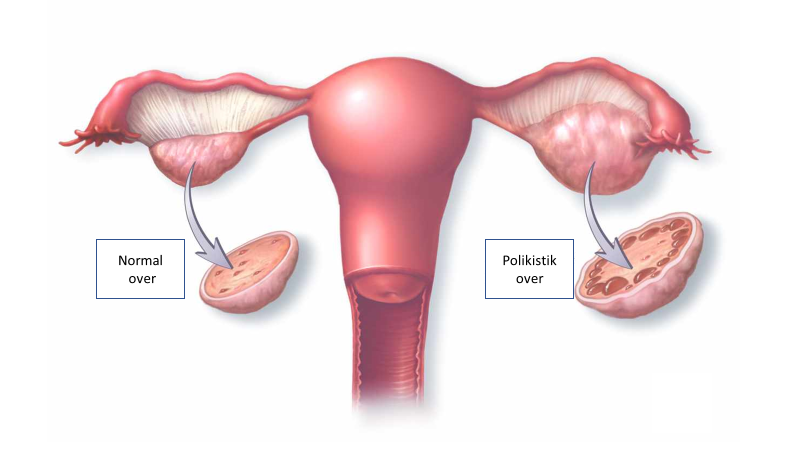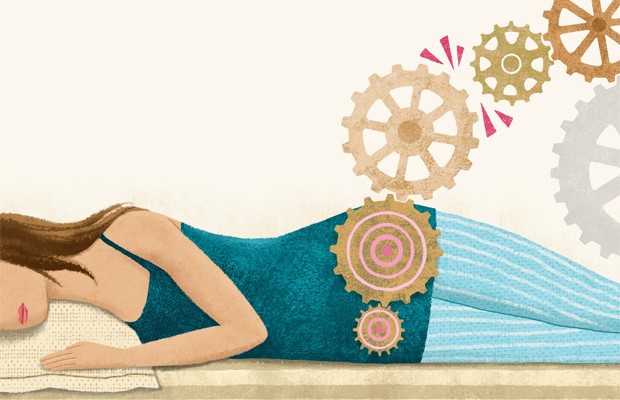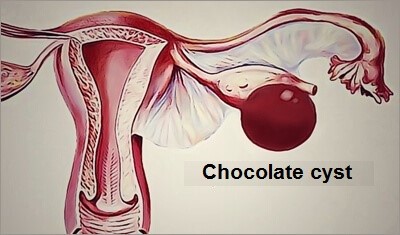Frequently Seen Diseases Causing Female Infertility
What Is Polycystic Ovary Syndrome

This disorder is usually a constellation of symptoms. The diagnosis of polycystic ovary syndrome (PCOS) is made based on the presence of the criteria below. These criteria are:
- Infrequent or no menstrual bleeding periods
- Multiple small antral follicles found on ultrasound examination
- Increased hair growth or high blood levels of male hormones
Presence of 2 out of the 3 criteria listed above will lead to making a diagnosis of PCOS.
The main underlying mechanism in PCOS is the tissue resistance to blood insulin binding to relevant receptors. The severity of tissue resistance can vary. The insulin resistance test, called HOMA-IR, and the glucose tolerance test may reveal abnormal results in advanced severity levels of this resistance. Even, diabetes may accompany these findings.
When insulin cannot bind to the relevant receptors in the tissue, it stimulates the male hormone receptors and raises the blood levels of male hormones. The elevated hormone levels consequently inhibit ovulation and menstruation. The increase in the male hormone levels give rise to other symptoms of PCOS, including acne, increased hair growth, irritability, oily skin, hair loss, and excess abdominal fat.
Because ovulation is irregular and infrequent in PCOS, patients cannot estimate the date of ovulation precisely. Therefore, they cannot conceive.
The likelihood of achieving treatment success is the highest in these patients in the absence of other potential underlying causes. After detailed diagnostic tests to evaluate infertility, artificial insemination or IVF can be scheduled based on the medical history of previous treatments, age, and clinical condition of the patient.

The patients with PCOS should immediately see an IVF specialist as soon as possible so that they can have a baby soon.
In PCOS, there is a tendency to develop diabetes. Therefore, maintenance of appropriate body weight is critical. Appropriate consultation should be provided to the patient to adopt the appropriate type of diet.
WHAT IS ENDOMETRIOSIS ?
Some amount of (one to two drops) menstrual blood is poured into the abdominal cavity through the patent ovarian tubes every month. This blood contains live uterine cells. In women with a genetic predisposition to endometriosis, these pouring out live intrauterine cells adhere to the contacted tissue and they are called "endometriotic implants". At these implantation sites, they start acting like the original internal lining of the uterus. These implants may be too small to be visible to the naked eye or they can be as large as having diameters measured in centimeters.
With the changing hormone levels throughout the monthly menstrual cycles, these implants engorge as the endometrial tissue in the internal lining of the uterus does and they bleed with menstruation.
Implants can cause varying degrees of adhesion depending on their site. They may cause adhesions, especially in the intestines and around the genital organs. Due to bleeding in these implants during each menstrual period, the patient suffers from severe menstrual pain (dysmenorrhea). These implants induce pain also during sexual intercourse and defecation due to the adhesions between the large intestine and the vagina.

Endometriosis acts in many ways causing infertility.
These criteria are:
1.The adhesions around the tubes may cause tubal blockage.
2. By inducing cyst development in the ovaries (chocolate cysts /endometrioma), they disrupt ovulation functions.
3. Ovarian cysts can diminish the ovarian reserve.
4. The intra-abdominal implantation of the endometrial tissue can change the cellular architecture locally, preventing the capture of the ovulated egg by the ovarian tubes and by impairing sperm motility within the tube; consequently resulting in inhibition of fertilization.
5. These aberrant tissue pieces may impair implantation of the embryo by disrupting the cellular architecture in the uterine cavity.
However, patients with endometriosis are not advised to postpone their plans for having a baby even though these symptoms are apparent.
WHAT IS ENDOMETRIOMA (CHOCOLATE CYST)?

Every healthy woman ovulate around the 12th to 14th days of menstruation each month and in fact, this ovulation is a cystic explosion.
At the explosion site, an opening of approximately 0.5-1 cm occurs, which may not close until the menstrual bleeding occurs. If some menstrual blood passes through the tubes, reaches this opening, and adheres to the cavity left empty after the explosion; it may start growing there and develop as an ovarian cyst called endmetrioma. The implanted tissue in the cavity starts behaving like the internal lining of the endometrial cavity and bleeds monthly with each menstrual period. However, the blood accumulates in the newly formed cyst and decompose by time, turning into a chocolate-like structure.
Therefore these cystic structures are colloquially called chocolate cysts.
Endometriosis disease stages can be graded from one to four. A chocolate cyst (endometrioma) will indicate that the patient has a stage 4 endometriosis.
Endometrioma is mainly treated by surgery. However; no matter how careful the surgery is performed, the intervention may cause reduction in the ovarian reserve and may take away the patient's chances of getting pregnant.
Therefore, the patient should see an IVF specialist before a planned operation for her ovarian reserve to be evaluated.
Every 10 women, uterine fibroids are removed with a method called (myomectomy). In other patients, fibroids are followed up regularly.
Robotic Surgery
Robotic surgery is a laparoscopic (closed) surgery method using a robot named da Vinci to obtain a 3-dimensional visual guidance. There is a misconception that robotic surgery is performed by the robot. However, it is not the robot that performs the surgery, but the surgeon who controls the arms of the robot.
Other Topics
How Does Pregnancy Occur Naturally
Ovaries are the main organs that contain the female sexual (reproductive) cells.
Read MoreWhat is Infertility (Sterility)?
Infertility (sterility) is the condition, in which the couple have had sexual intercourse without contraception regularly for 1 year but they have not achieved pregnancy.
Read MoreWhen Should Couples Present With Suspected Infertility?
Of the 100 couples, who can follow and estimate the days of ovulation and who can have a regular sexual intercourse two or three days in a week to cover these critical days.
Read MoreWhat Causes Infertility?
The causes of infertility may either belong to the man or the woman.
Read MoreFrequently Seen Diseases Causing Female Infertility
This disorder is usually a constellation of symptoms. The diagnosis of polycystic ovary syndrome (PCOS) is made based on the presence of the criteria below.
Read MoreWhat Are The Tests to Investigate Infertility
First, a detailed medical history is essentially taken. The following factors should be investigated in detail.
Read More